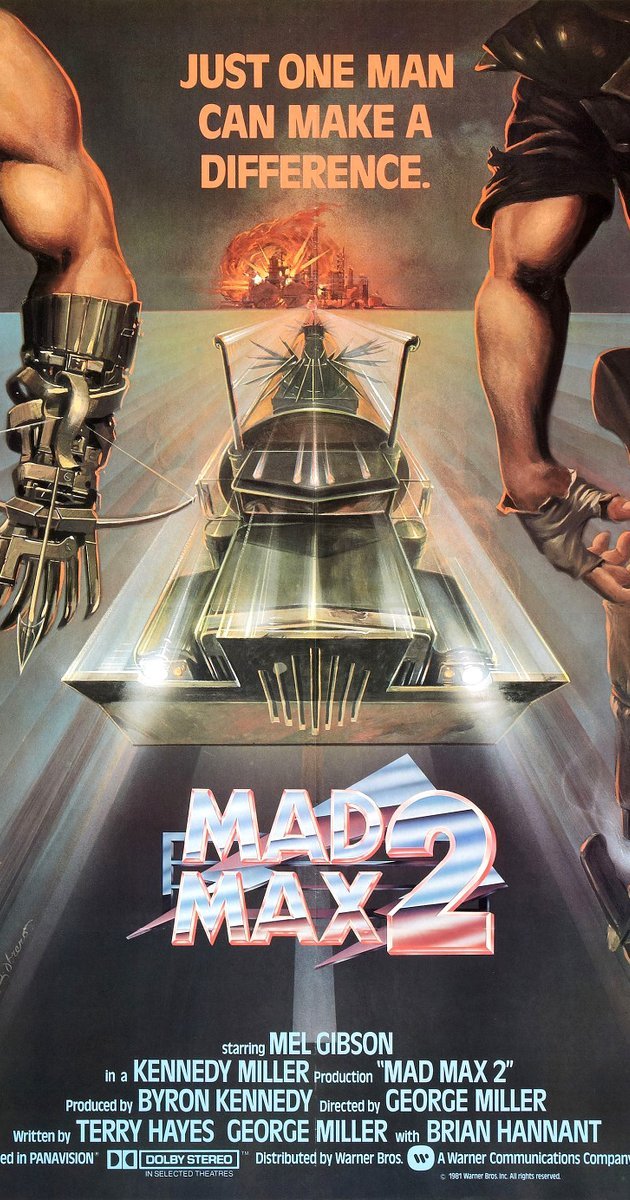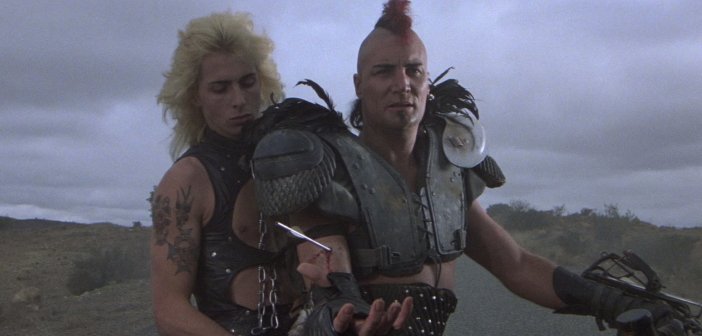Leather, Petrol, and Muscle | Mad Max 2: The Road Warrior at 35
In the late 1970s George Miller was an A&E doctor in Australia. Inspired and horrified by road traffic accidents and the state of the world at large he went on to write and direct the cult classic Mad Max in 1979. Spurred on by its success Miller made a sequel, Mad Max 2: The Road Warrior, released today in 1982. Sequels by nature are designed to be bigger, better, and flashier and Miller went hell for leather in terms of this approach. Mad Max 2 is a cultural milestone. It set the tone for post-apocalyptic media for decades to come, further boosted Mel Gibson’s career and made millions at the box office.
Mad Max 2 takes place several years after the events of the original. ‘Mad’ Max Rockatansky (Mel Gibson) is left jaded, crippled, and burnt-out by the murder of his family and the collapse of society. He is a drifter, his only companions are a dog, his old police V-8 Interceptor and a sawn-off shotgun. In the never-ending search for petrol or “guzzoline” Max comes across a settlement besieged by a gang of leather-clad muscle men riding an assortment of cars that range from police cruisers to pink Cadillacs to something that looks like a Hot Wheels toy. As is always the case in these pseudo-Western films the lone wanderer becomes the town’s only saving grace.

Max is a hero whether he likes it or not. He is an Australian version of Akira Kurosawa’s Yojimbo or Clint Eastwood’s The Man with No Name. He will do his very best to save the settlers even if they don’t want him to and even if it kills him. When the world is in the grip of an energy crisis and a nuclear winter, the best bet lies with the man who has nothing left to lose. The world of Mad Max 2 is the reason it and the following films in the series did so well.
The fear of nuclear holocaust and the regression of man back to his most primal instincts has been with us ever since physicists first split the atom. Media has reflected this with the likes of the absurd Dr. Strangelove or the heart-breaking When the Wind Blows but Mad Max has forced audiences to live it. Never has the apocalypse felt so visceral or close. This is thanks mostly to Miller’s direction and attention to detail.
Whoever has the biggest engine with the most gas in it is king and that’s not an innuendo. The Lord Humungous (Kjell Nilsson) has the biggest engine, the least clothes, and the biggest pecs of anyone in the film. But he doesn’t have the most gas. The settlement, led by Papagallo (Michael Preston), has an entire tanker full of it. The discrepancies between both tribes are clear. The settlement wear all white and dress in hockey armour. The Humungous’ radiation crazed bikers wear spiked bondage gear. Nothing says evil like a guy with a red mohawk, a wrist crossbow and assless chaps. The Devil is in the details and George Miller is liberal with his details even if those details involve a great deal of BDSM gear.

Heroes are found in the least likely places in the post-apocalypse. From alcoholic Hamish Abernathy of the Hunger Games trilogy to deaf-mute Nick Andros of Stephen King’s The Stand. The same can be said of Mad Max 2. The Gyro Captain (Bruce Spence) is a hermit who flies a gyrocopter and looks like a castaway from Spandau Ballet. He is pressed into service by Max and after becoming trapped in the settlement volunteers his services. He goes on to become the settlement’s leader after assisting in their escape. The Feral Kid (Emil Minty) literally emerges out of a hole in the ground with a steel boomerang and kills the boyfriend of one of the Humungous’ crew. Nothing says hero like an angry child with a bent metal stick.
Getting back to the themes of burning deserts, oil shortages and the ever-ticking doomsday clock Mad Max 2 has had a long-lasting legacy regarding the above. It’s impossible to talk about Mad Max 2 without mentioning Mad Max: Fury Road. The fourth instalment of the Mad Max franchise was the film Mad Max 2 always wanted to be and the film Miller always wanted to make. It had everything the second film was lacking: fully realised female characters, an atomic sandstorm, constant (and I mean constant) action and a lead actor who wasn’t an anti-Semite. Still without Mad Max 2 there would be no Mad Max: Fury Road.
[arve url=”https://www.youtube.com/watch?v=kBrAh3OyYnI”]
As neo-liberalism worsened a recession brought on by an oil crisis and fears grew over continued nuclear testing by countries such as France, George Miller put a generation’s nightmares onto film reel. The first Mad Max, though made on a shoestring budget, reflected a world on the brink. Max can no longer protect people as a police officer, not even his own family, and as the bombs begin to fall he unknowingly becomes a figure of hope in a time of uncertainty: The Road Warrior. This is who we see in Mad Max 2. In Mad Max Beyond Thunderdome… Well the idea of Mel Gibson working for Tina Turner was always a bit ridiculous and it’s best we leave it at that. Mad Max: Fury Road is where it all came full circle.
We should be grateful for people like Max. He may be surly, grouchy, and even a bit mad but he’s a good person. Max, at his core, has always been the guy you want on your side either during a football match or while being hounded through a desert by paint-sniffing Juggalos on war buggies. He’s human and he knows that the most important resource in an irradiated desert is hope. Okay maybe it’s water but hope is up there too. In a world where the President of America’s spray tan is the colour of a nuclear sunset we need more people like Max and we need them mad.
Featured Image Credit

